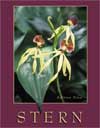1. Leaves are similar to solar panels in that they are covered with
a transparent epidermis that admits light to the interior, and many twist on
their petioles so that their flat surfaces are inclined to the sun throughout
the day. 2. All leaves originate as primordia. Most leaves consist of a blade
and a petiole that may have paired stipules at the base. Leaves may be simple
or compound, and all are associated with leaf gaps. 3. The lower and often the upper surfaces of leaves have pores (stomata)
that permit air circulation and facilitate photosynthesis. Leaves also respire,
accumulate wastes, and eliminate excess moisture via transpiration. The shapes,
sizes, and textures of leaves vary greatly. 4. The venation and the compounding of leaves may be either pinnate
or palmate. The main vein is the midvein in simple leaves and the rachis in
compound leaves. Monocot leaves have parallel veins. Dichotomous venation occurs
in a few leaves. 5. The epidermis is a surface layer of cells that is coated with a cuticle.
Waxes, glands, hairs, and an occasional cellular crystal may also be present.
The lower epidermis usually contains numerous stomata, each formed by a pair
of guard cells that regulate both evaporation of water vapor from the leaf and
gas exchange between the interior and the atmosphere. 6. The mesophyll between the upper epidermis and the lower epidermis
may be divided into an upper palisade layer, which consists of rows of parenchyma
cells containing numerous chloroplasts, and a lower spongy layer in which the
parenchyma cells are loosely arranged. Veins traverse the mesophyll. 7. Leaves may be specialized, usually in adaptation to specific combinations
of environmental factors. Specializations include thick leaves, fewer stomata,
water-storage leaves, tendrils, spines, food-storage leaves, flower-pot leaves,
window leaves, reproductive leaves, bracts, and insect-trapping leaves. 8. Environmental factors and hormonal changes that occur in autumn in
the abscission zone at the petiolar base of each deciduous leaf cause leaves
to drop. Leaves change color as green chloroplast pigments break down, revealing
pigments of other colors, and different pigments accumulate in cell vacuoles. 9. Leaves are a source of many useful products, including food, beverages,
dyes, fuel, spices, flavorings, oils, medicinal and narcotic drugs, insecticides,
and waxes. | 


 2003 McGraw-Hill Higher Education
2003 McGraw-Hill Higher Education

 2003 McGraw-Hill Higher Education
2003 McGraw-Hill Higher Education